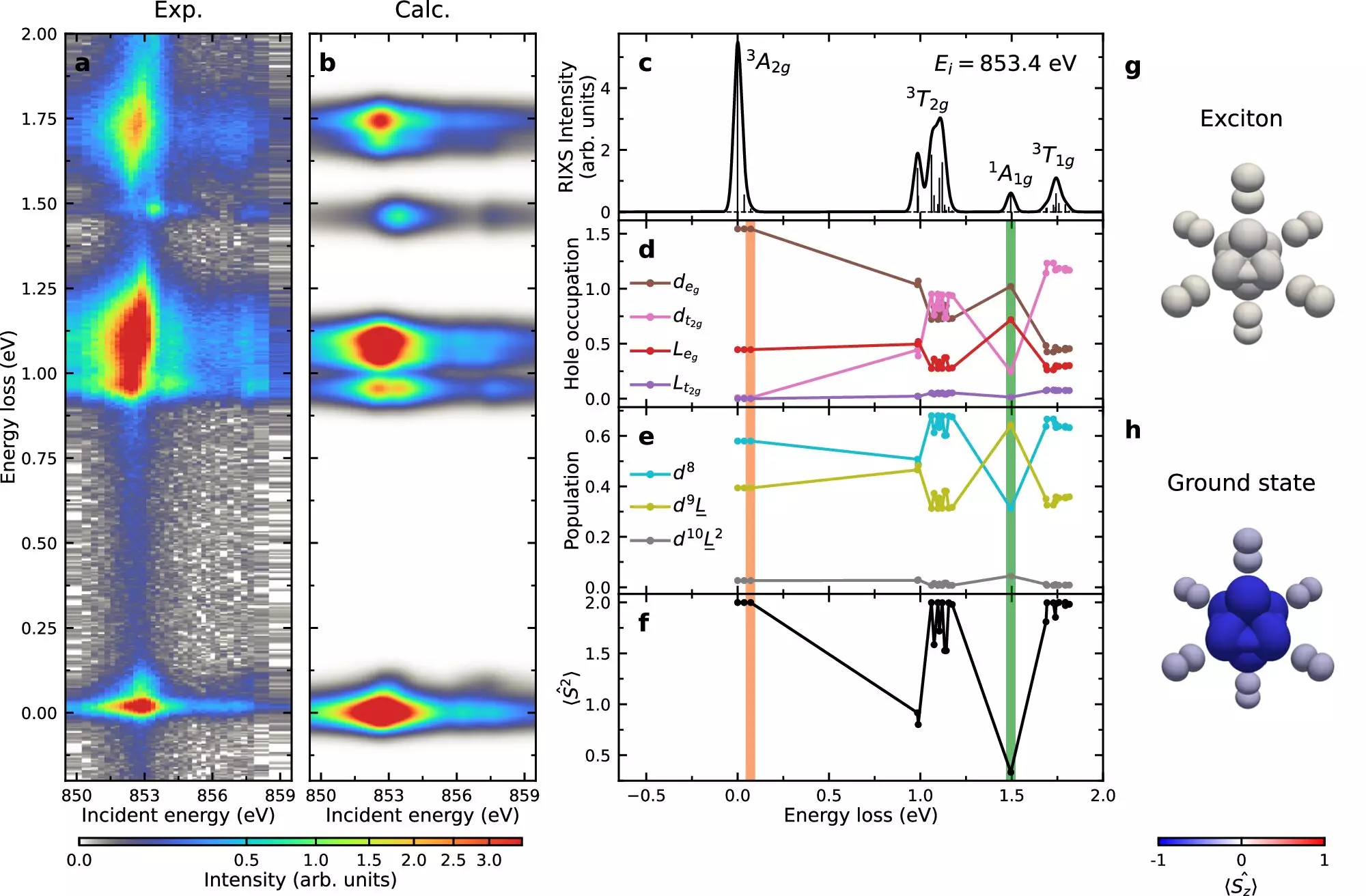Excitons, a unique blend of an electron and a “hole” within a material’s crystal lattice, play a crucial role in the field of condensed matter physics. The recent study conducted by a team at the U.S. Department of Energy’s Brookhaven National Laboratory has shed light on the formation and behavior of these mobile, particle-like entities in van der Waals magnets. This class of materials not only exhibits fascinating optical properties but also magnetic characteristics that could revolutionize technology, particularly in areas such as information storage and computation. The implications of this research extend far beyond the lab, shaping an understanding of how materials at the microscopic level can affect advancements in data management and storage systems.
The material of focus in this groundbreaking research is nickel phosphorus trisulfide (NiPS3), a member of the family of van der Waals magnets. Specifically, this work outlines how excitons interact with the unique magnetic structure presented by NiPS3, setting a foundation for potentially controlling these excitons through magnetic means. Such insights could unlock new pathways for innovative technologies that leverage both the optical and magnetic properties embedded in materials of this type.
Achieving a deeper understanding of excitons is no small feat; it requires state-of-the-art methodologies capable of probing the intricate behaviors of these quasi-particles within materials. The researchers utilized a sophisticated X-ray technique known as resonant inelastic X-ray scattering (RIXS) at the National Synchrotron Light Source II (NSLS-II). This facility is renowned for its ability to produce intense beams of X-ray light, enabling scientists to delve into various materials, from biological compounds to battery materials.
RIXS operates by directing X-ray photons at a material, which in turn excite electrons, causing them to scatter in numerous directions. Utilizing specialized detection techniques allows scientists to interpret the resulting data, essentially reconstructing the movements and interactions of electrons and holes within the examined material. This complex dance of particles provides invaluable information about how excitons form and propagate in NiPS3, offering a glimpse into the fundamental workings of quantum phenomena.
The findings of the Brookhaven team revealed that the behavior of excitons within NiPS3 is significantly influenced by the Hund’s exchange interaction—a principle governing the energy configurations of electron spins within atoms. This aspect emphasizes the entwined nature of electronic and magnetic properties in van der Waals materials, providing a crucial understanding of how excitons can be managed and manipulated via their magnetic environments. Such insights could lead to groundbreaking applications in quantum computing and spintronics, which depend on the control of electron spin dynamics.
Moreover, the research unveiled parallels between exciton motion and a spin disturbance called a “double-magnon.” Magnons, collective excitations of electron spins, underscore the interconnectedness of magnetism and electron behavior in van der Waals systems. This observation accentuates the importance of exploring how various excitations interact within these materials, potentially opening doors to the development of new multi-functional devices that leverage both electronic and magnetic characteristics.
As we look to the future, advancements in instrumental techniques like RIXS and electron microscopy herald a new era of exploration into van der Waals materials. The potential to take even more precise measurements and unveil the underlying physics governing exciton dynamics promises to elevate our understanding of these complex systems. With each new discovery, the opportunities for practical applications in high-density data storage, efficient energy systems, and innovative computational technologies continue to expand.
The study of excitons in van der Waals magnets like NiPS3 represents a significant step forward in condensed matter physics. By unraveling the intricate relationships between quantum particles, magnetic properties, and electronic interactions, researchers are poised to facilitate technological advancements that will define the next generation of materials science. The journey of discovery continues, and with it, the promise of transforming our technological landscape through the manipulation of the fundamental building blocks of matter.


Leave a Reply